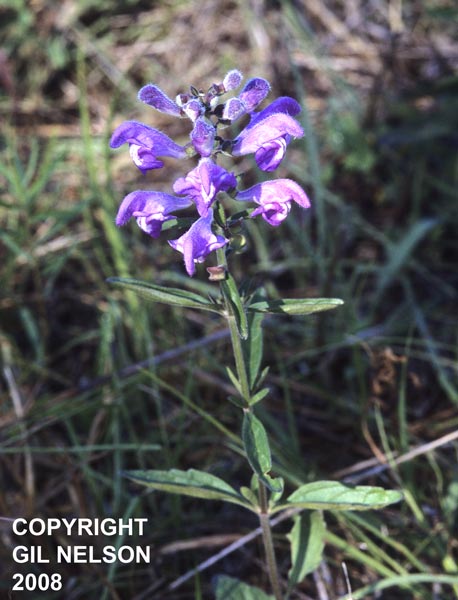Difference between revisions of "Scutellaria integrifolia"
KatieMccoy (talk | contribs) |
KatieMccoy (talk | contribs) (→References and notes) |
||
| Line 41: | Line 41: | ||
==Photo Gallery== | ==Photo Gallery== | ||
==References and notes== | ==References and notes== | ||
| + | Florida State University Robert K. Godfrey Herbarium database. URL: [http://herbarium.bio.fsu.edu http://herbarium.bio.fsu.edu]. Last accessed: Collectors: States and Counties: Compiled by Tall Timbers Research Station and Land Conservancy. | ||
Revision as of 19:26, 13 October 2015
| Scutellaria integrifolia | |
|---|---|

| |
| Photo taken by Gil Nelson | |
| Scientific classification | |
| Kingdom: | Plantae |
| Division: | Magnoliophyta – Flowering plants |
| Class: | Magnoliopsida – Dicotyledons |
| Order: | Lamiales |
| Family: | Lamiaceae ⁄ Labiatae |
| Genus: | Scutellaria |
| Species: | S. integrifolia |
| Binomial name | |
| Scutellaria integrifolia L. | |

| |
| Natural range of Scutellaria integrifolia from USDA NRCS Plants Database. | |
Common name: helmet flower
Contents
Taxonomic notes
Description
Distribution
Ecology
Habitat
In the Coastal Plain in Florida and Georgia, S. integrifolia can be found next to flowing artesian wells, burned palmetto-slashpine flatwoods, burned longleaf pinewoods, pine savannas, longleaf pine sandhills, mixed woodlands, at the mouth of creeks in swampy woodlands, marshes, creek banks, oak-hickory woods, moist depressions in pine woodlands, Nyssa-Cypress swamps, floodplains, and edges of calcereous glades (FSU Herbarium). It can occur in disturbed sites such as roadside ditches, powerline corridors, hammock slopes, along railroad depressions, peaty ditches bordering flatwoods, swamp clearings, along gas pipe line corridors, and slight seepage swale in cutover upland longleaf pine savannas. Soils include sandy loam, loamy soil, loamy clay, and peaty soils (FSU Herbarium). Associated species include Rhexia petiolata, Polygala cruciata, Polygala, Drosera, and Lachnanthes (FSU Herbarium).
Phenology
It has been observed flowering March through July and fruiting March through July and November (FSU Herbarium).
Seed dispersal
Seed bank and germination
Fire ecology
Pollination
Use by animals
Diseases and parasites
Conservation and Management
Cultivation and restoration
Photo Gallery
References and notes
Florida State University Robert K. Godfrey Herbarium database. URL: http://herbarium.bio.fsu.edu. Last accessed: Collectors: States and Counties: Compiled by Tall Timbers Research Station and Land Conservancy.